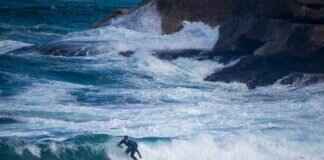David Muir, a well-known journalist, recently unveiled groundbreaking 3D scans of the Titanic, shedding light on the ship’s final moments in a new National Geographic special. This innovative project involved creating a full-size 3D rendering of the ship’s wreckage, allowing for a minute-by-minute timeline reconstruction of its tragic end. The detailed scans offer a unique perspective on one of the most famous maritime disasters in history, providing fresh insights and a deeper understanding of what transpired on that fateful night in 1912.
Exploring the Depths: The Titanic’s Untold Story
The Titanic, a luxurious passenger liner deemed “unsinkable,” met its tragic fate on April 15, 1912, when it struck an iceberg in the North Atlantic Ocean and sank in a matter of hours. Over 1,500 people lost their lives in the disaster, making it one of the deadliest maritime tragedies in history. For decades, the remains of the Titanic lay undisturbed on the ocean floor, a haunting reminder of the lives lost and the hubris of human engineering.
However, recent advancements in technology have allowed for a closer examination of the Titanic’s wreckage, providing researchers with unprecedented access to the ship’s final resting place. David Muir’s presentation of the 3D scans offers a glimpse into the past, bringing to life the harrowing events that unfolded over a century ago. By reconstructing the ship’s interiors and exteriors in meticulous detail, the scans provide a virtual tour of the Titanic, allowing viewers to explore its decks and compartments as if they were onboard during its maiden voyage.
Uncovering New Insights: The Impact of 3D Technology
The use of 3D scanning technology has revolutionized the field of maritime archaeology, enabling researchers to create highly accurate digital models of underwater sites. In the case of the Titanic, these scans have revealed previously unseen details about the ship’s final moments, offering clues as to how and why it sank so quickly. By analyzing the 3D renderings, experts can pinpoint areas of damage and structural weakness, helping to piece together the sequence of events leading up to the disaster.
In addition to the technical aspects of the scans, Muir’s presentation also delves into the human stories behind the tragedy, highlighting the experiences of passengers and crew members onboard the Titanic. Through firsthand accounts and historical records, viewers gain a deeper appreciation for the human cost of the disaster, as well as the heroism and sacrifice displayed by those who tried to save others in the face of impending doom. The 3D scans serve as a poignant reminder of the lives lost and the lessons learned from the Titanic’s untimely demise.
In conclusion, David Muir’s unveiling of the 3D scans of the Titanic offers a compelling look into the past, combining cutting-edge technology with historical storytelling to create a vivid and immersive experience for viewers. By presenting a detailed reconstruction of the ship’s final moments, Muir brings new insights and perspectives to a well-known tragedy, ensuring that the legacy of the Titanic lives on for future generations to learn from and remember.














